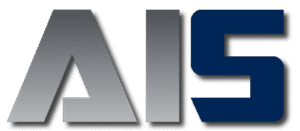Virtual hearings and remote depositions are now standard in litigation and regulatory matters. Done well, they can reduce cost, accelerate timelines, and preserve the integrity of the record. Microsoft Teams and SharePoint—supported by Microsoft 365’s security, compliance, and automation—offer a robust, end-to-end platform for planning, conducting, and archiving remote proceedings with confidence and scale.
Table of Contents
- Why Teams + SharePoint for Virtual Hearings and Remote Depositions
- Efficiency & Productivity Gains
- Workflow Optimization & Best Practices
- Compliance & Risk Management
- Security & Data Protection
- Technology Tools in Focus: Microsoft 365 Features That Matter
- Practical Example: Automating Exhibit Management with Teams, SharePoint, and Power Automate
- Client Service & Experience
- Future Trends & Innovation
Why Teams + SharePoint for Virtual Hearings and Remote Depositions
Microsoft Teams delivers secure, high-quality audio/video, breakout rooms, presenter controls, live transcription, and recording—all essential for virtual hearings and remote depositions. SharePoint sits behind each Team, providing structured document management, permissions, versioning, and audit trails. Together, they enable a matter-centric workspace: schedule proceedings, manage exhibits, control access, conduct the session, and store the record in one integrated environment.
Law firms and legal departments gain operational consistency by templatizing proceedings. Standard meeting policies, a dedicated SharePoint library for exhibits, sensitivity labels, and automated retention rules help ensure every hearing or deposition follows the same high-compliance pathway, regardless of jurisdiction or practice group.
The native integration with Microsoft Purview (eDiscovery, legal hold, DLP, and audit) closes the loop from planning to preservation. Instead of stitching together point solutions, Teams and SharePoint unify workflows while honoring chain-of-custody and confidentiality requirements.
➡ Intake and Scheduling → ➡ Matter Workspace (Teams) → ➡ Exhibits Library (SharePoint) → ➡ Meeting (Teams) → ➡ Recording/Transcript (Stream/SharePoint) → ➡ Preservation & eDiscovery (Purview)
Efficiency & Productivity Gains
Streamlining virtual proceedings is less about “videoconferencing” and more about removing operational friction around preparation, in-session execution, and post-event archiving. Microsoft 365 reduces handoffs and manual steps that create risk and delay.
- Matter-centric workspaces: Create a dedicated Teams channel for each hearing or deposition. Pin a SharePoint Exhibits library and add tabs for the agenda, participant list, and procedural orders.
- Automated scheduling: Use Outlook and Teams meeting templates with pre-configured lobbies, waiting rooms, watermarking, and recording policies to eliminate one-off setup errors.
- Exhibit readiness: Store, version, and pre-stamp exhibits in SharePoint, locking down permissions so only authorized presenters can expose sealed or restricted material.
- Real-time collaboration: Use Teams’ presenter mode, spotlighting, and content sharing queues so the record flows logically and interruptions are minimized.
- Faster finalization: Transcripts, recordings, and chat are automatically stored for disposition in SharePoint, enabling instant retrieval for follow-on motions, briefings, or settlement strategy.
The result: fewer emails, fewer last-minute mishaps, and fewer places for critical content to get lost. Teams and SharePoint offer a repeatable blueprint that scales across matters and practice teams.
Workflow Optimization & Best Practices
Consistent workflows ensure proceedings run smoothly while protecting confidentiality and preserving the record. Use this pre-, in-, and post-event approach to standardize operations.
Pre-Event Checklist
- Provision a “Proceeding” channel in the case Team with a pre-built folder structure (Notices, Exhibits, Procedural Orders, Transcripts).
- Create a SharePoint Exhibits library with unique permissions; enable versioning and require check-in/check-out.
- Apply sensitivity labels to control downloads, watermark prints, and prevent unauthorized sharing.
- Schedule a Teams meeting with: lobby enabled, attendee mic/camera moderation, watermarking for content/video if available, meeting chat restrictions, and “recording consent” pre-communications.
- Invite only authorized participants; require MFA and organization-approved devices when possible (conditional access).
- Test audio/video and screen-sharing for counsel, reporter, and witness; verify backup dial-in and document sharing plan.
In-Session Controls
- Admit only verified participants from the lobby; lock the meeting after it begins.
- Use the presenter role for questioning counsel; grant “can present” only to designated team members.
- Display exhibits from the SharePoint library, not personal desktops; use window-sharing to limit accidental disclosures.
- Use live transcription with speaker attribution; verbally confirm on the record that recording is taking place and consent is obtained.
- Leverage interpretation channels or add interpreters as co-presenters, if applicable.
Post-Event Finalization
- Recording and transcript automatically route to the SharePoint matter library; apply retention labels based on matter type.
- Trigger a standardized naming convention (e.g., YYYY-MM-DD_Deposition_WitnessName_Session#).
- Place content on legal hold in Microsoft Purview as required; restrict downloads for sensitive recordings.
- Generate a closing memo to file with key timestamps, exhibits introduced, and agreed follow-ups.
| Role | Pre-Event Tasks | In-Session Tasks | Post-Event Tasks |
|---|---|---|---|
| Lead Counsel | Approve agenda; review exhibits; confirm meeting settings and attendees. | Conduct examination; control pacing; confirm exhibits on the record. | Approve transcript edits; certify exhibit list; authorize retention/hold. |
| Associate/Paralegal | Build SharePoint library; apply labels; prepare exhibit order and annotations. | Share exhibits; monitor chat/Q&A; capture timestamps for key testimony. | File recordings/transcripts; update case chronology; circulate summary. |
| Court Reporter | Verify audio setup and transcription settings; clarify realtime feed needs. | Transcribe; flag unclear testimony; note exhibits referenced. | Deliver certified transcript; reconcile errata; archive per policy. |
| Witness | Identity verification; technology test; confidentiality reminder. | Provide testimony; confirm exhibit identification. | Review transcript for errata if permitted; confirm finalization. |
| IT/Case Manager | Enforce meeting policies; verify MFA/conditional access; load templates. | Monitor security; admit/lock; troubleshoot A/V; capture incident notes. | Audit logs; ensure retention/hold; report on access and chain-of-custody. |
Best practice: Treat each virtual hearing or deposition as a controlled record-making event. Pre-configure meeting policies, restrict who can present, share exhibits directly from SharePoint, and apply retention and legal hold immediately after the session. This reduces human error and preserves the integrity of the record.
Compliance & Risk Management
Virtual proceedings must meet strict evidentiary, ethical, and regulatory standards. Microsoft 365 provides controls to prove consent, manage retention, and support discovery, while minimizing accidental disclosures.
- Consent and notice: Include recording and confidentiality notices in the invite and at session start; store these communications in the matter channel.
- Retention and holds: Use Microsoft Purview retention labels for exhibits, recordings, and transcripts; place relevant content on legal hold when required.
- Auditability: Rely on unified audit logs to evidence when materials were accessed, presented, or exported.
- Jurisdictional requirements: Configure data residency, meeting privacy settings, and cross-border sharing rules consistent with applicable regulations.
- Accessibility and fairness: Use live captions, transcription, and interpreter support; document accommodations in the case file.
When in doubt, standardize. Templates for meeting policies, labels, and folder structures reduce deviation and provide demonstrable compliance across matters.
Security & Data Protection
Security must account for both platform controls and participant behavior. Teams and SharePoint allow you to enforce least-privilege access, lock down sensitive content, and restrict risky behaviors during proceedings.
- Identity assurance: Require multifactor authentication (MFA) and conditional access (e.g., block unmanaged devices from downloading). Use guest access only when necessary and with limited permissions.
- Meeting controls: Enable lobby, disable attendee screen sharing, watermark video/content if available, and lock meetings after all parties are present.
- Content protection: Apply sensitivity labels to prevent forwarding, restrict downloads, and block copy/print on exhibits and recordings.
- Data loss prevention (DLP): Monitor and, if necessary, block sharing of highly sensitive content in chat and channels.
- Scoped sharing: Present exhibits from SharePoint with view-only links; use window share instead of desktop to avoid accidental exposure.
- Post-event hygiene: Restrict access to recordings and transcripts to the matter team; remove guests at case closure; rotate access reviews.
Security posture is strongest when embedded in templates and policies, not left to individual discretion on the day of the proceeding.
Technology Tools in Focus: Microsoft 365 Features That Matter
- Teams Meeting Templates and Policies: Predefine lobby, recording, watermarking, chat, and presenter settings for hearings and depositions.
- SharePoint Document Libraries: Versioned, permissioned repositories for exhibits, orders, and transcripts; integrate with Teams tabs.
- Microsoft Purview: Retention labels, legal hold, eDiscovery Standard/Premium, audit, and DLP to protect and preserve the record.
- Live Transcription and Captions: Improves accessibility; accelerates post-event summary and cite-checking.
- Power Automate: Automates exhibit numbering, stamping, metadata updates, and post-event filing workflows.
- Microsoft Forms/Bookings: Streamline witness intake, scheduling, and preparation questionnaires.
- Stream (on SharePoint): Stores meeting recordings with permissions aligned to the matter and subject to retention policy.
Practical Example: Automating Exhibit Management with Teams, SharePoint, and Power Automate
Challenge: During remote depositions, counsel often juggle non-final exhibits, lose track of numbering, and struggle to ensure the record reflects the correct version. The solution is a standardized exhibit pipeline integrated into Teams and SharePoint, with Power Automate ensuring numbering, stamping, and filing are consistent.
Step-by-Step Implementation
- Set up a matter Team with a “Depositions” channel. Pin a SharePoint “Exhibits” library with the following metadata: Exhibit Number, Title, Introduced (Yes/No), Confidentiality Level, Introduced Timestamp, and Witness.
- Create a SharePoint content type “Exhibit” with required fields. Enable versioning, check-in/check-out, and unique permissions so only the matter team can edit prior to introduction.
- Build a Power Automate flow triggered when a file is added to the Exhibits library:
- Assign the next Exhibit Number based on a counter list (e.g., “Exhibit 12”).
- Optionally apply a PDF stamp to the first page: case caption, exhibit number, date, and confidentiality label.
- Update metadata; set status to “Ready.”
- Add a Teams tab to the “Depositions” channel pointing to the Exhibits library’s filtered view (Status = Ready). Train presenters to share content from this tab only, not from desktops.
- Before the deposition, run a “Pre-Flight” flow that:
- Verifies each Ready exhibit has a number and stamp.
- Generates an Exhibit Index (CSV/PDF) and posts it to the channel.
- Checks sensitivity labels and access; alerts if any exhibit is missing controls.
- During the deposition, when counsel introduces an exhibit, a channel message action (or quick form) sets Introduced = Yes and captures the timestamp. The flow updates the index and posts the citation for the reporter.
- After the deposition, a “Finalize” flow:
- Moves Introduced exhibits to a “Filed” folder with retention label applied.
- Generates a closing package (Exhibit Index, introduced exhibits, transcript placeholder) and stores it in the matter’s “Transcripts & Recordings” library.
- Triggers a Purview legal hold if the matter policy requires it.
- For follow-up: A quick action creates a “Marked but Not Introduced” report for potential subsequent sessions.
Outcome: Counsel presents from a clean, numbered, and stamped list; the court reporter receives accurate exhibit identifiers in real time; and post-event filing is automatic, consistent, and defensible.
Client Service & Experience
Clients expect proceedings to be efficient, accessible, and predictable. Microsoft Teams and SharePoint improve the experience by reducing logistics overhead and providing clear, professional artifacts.
- Professional communications: Standardized invitations with agenda, participation instructions, and confidentiality notices reduce confusion.
- Clear record: Real-time captions and reliable recording/transcription give clients confidence that testimony is captured accurately.
- Fewer delays: Lobby control, presenter restrictions, and exhibit tabs keep sessions focused and on schedule.
- Rapid follow-up: Post-event packages—transcripts, exhibit index, and action items—are available faster, aiding decision-making.
The net effect is better outcomes with fewer billable hours spent chasing logistics, allowing attorneys to concentrate on strategy and advocacy.
Future Trends & Innovation
Expect continuing advances in AI-powered summarization, automated citation extraction, and real-time translation to reshape remote proceedings. Teams’ evolving meeting controls, enhanced watermarking, and compliance analytics will further reduce risk. Deepening integration between SharePoint, Purview eDiscovery, and transcription engines will accelerate timelines from testimony to motion practice. Firms that templatize today—embedding policy, security, and automation—will be best positioned to scale tomorrow’s hybrid litigation and regulatory workflows.
Virtual hearings and remote depositions succeed when operations, not just technology, lead. Teams and SharePoint give legal professionals a secure, consistent, and automated framework to prepare, conduct, and preserve proceedings. Standardized templates, strong permissions, and post-event automation reduce risk and increase speed, while improving client confidence and the quality of the record.
Want expert guidance on improving your legal practice operations with modern tools and strategies? Reach out to A.I. Solutions today for tailored support and training.





